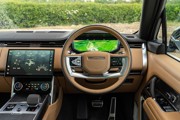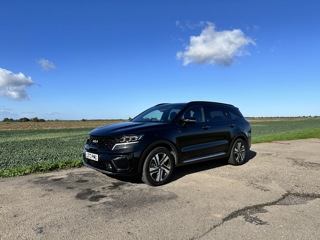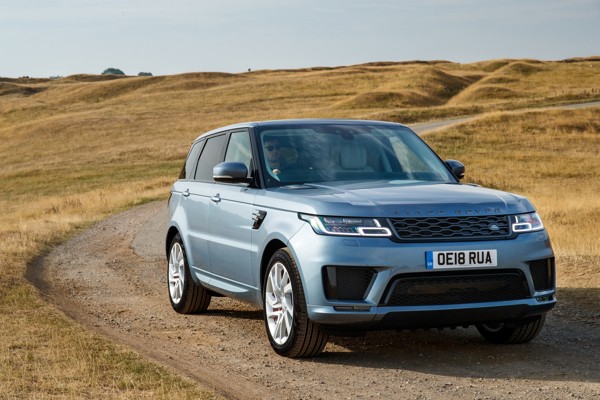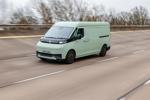Review
Range Rover isn’t exactly a byword for cost saving or efficiency, yet look in the car park of any big business and you’re almost certain to spot one.
In five generations, the car has become the de-facto luxury SUV for company leaders, and, in its latest guise, enhanced electrification makes it more compelling than ever.
We saw the world’s first plug-in hybrid Range Rover in the previous variant, which helped it retain some fleet sales as rising taxation forced many drivers out of petrol and diesel models. This latest Range Rover is offered with two and a fully-electric version is expected to arrive before the end of the year.
The Range Rover’s familiar silhouette is retained but, look deeper and you’ll notice the retractable door handles and windows that blend seamlessly into the body work. Land Rover engineers have worked hard to improve the new model’s aerodynamics to maximise its efficiency.
The underpinnings are new too – making room for the upcoming electric model’s battery and providing rear-wheel steering for the first time. Inside, the Range Rover makes a departure from the overtly luxurious cabins of its forefathers and opts for a minimalist approach.
Build quality seems better than ever, although there’s fewer bits to prod and poke as most of the dashboard is taken up by the giant infotainment screen. It juts out, so it falls to hand easier, but looks a bit like an afterthought. Nevertheless, the system, with its high-definition graphics, is glorious to use.
The chassis is very good. Riding on adaptive air suspension, and with all sorts of clever gadgetry going on underneath, it’s almost implausible that a car this big and tall can negotiate corners with so little fuss. The rear-wheel steering is a boon, with a turning circle comparable to that of a supermini.
In its most comfortable setting the car feels detached and floaty, with a little bit of chatter noticeable over rougher surfaces, while the steering and throttle are a tad benign. When we switched the Range Rover to Dynamic mode, however, it firmed everything up just enough to make all those problems disappear.
Despite being more than five metres long and two metres wide, the Range Rover is surprisingly easy to drive. The driving position is like no other, offering impressive visibility of the road ahead, combined with imperious luxury, it really does feel like you’re controlling the car remotely from the comfort of a high-end hotel room.
Show the car some bends, however, and it continues to defy belief. While there’s some initial trepidation that your penthouse might fall over as soon as you attempt a corner, the Range Rover is remarkably capable. Its air suspension keeps it flat, while its bulk provides plenty of grip. The four-wheel steering remains in play, helping to pivot the car through turns. When you reach motorway speeds the system changes tact and turns with the front wheels to shift the car across lanes with minimal fuss.
The Range Rover’s overhaul wouldn’t be complete without a new family of engines, so under the bonnet there’s a choice of new inline six-cylinder petrol and diesel units with mild hybrid tech, a petrol V8 and two plug-in hybrids.
The entry-level D300 offers plenty of power and is as quick as the SDV8 from the previous generation, accelerating from 0-60mph in 6.5 seconds.
With 350PS and an indicated 35mpg from our test car, the D350 is very much the real-world sweet spot of the range and well suited for those that will be using it for chauffeuring.
The petrol P400 is thirstier than the diesels, with similar real-world performance, while the P530 and P615 make use of a V8.
Those acquiring a Range Rover through a company car scheme, however, are far more likely to opt for the new plug-in hybrids – at least until the EV comes along. They serve up either 460PS or 550PS, pairing a three-litre six-cylinder petrol engine with an electric motor.
With low BIK of just 5%, real-world fuel consumption of around 40mpg – or more if you do lots of trips using the 70-mile battery range – and performance to match the V8 models, the plug-in hybrids are our pick of the line-up.
Prices for the new Range Rover start at £103,720, or £115,585 for a plug-in hybrid. High-spec models will cost north of £150,000, while those who tick every box on the options list will pay over £200,000. While more expensive than before, it offers more practicality, with the option of seven seats, and provides the drivability and build quality you’d expect for the price.
The Range Rover has always set the bar in the luxury SUV segment and this version retains its crown.
Matt has been an automotive journalist for nine years and has driven just about every new car and van that's on sale. As content editor - vehicles he is responsible for the automotive content on Fleet News and also contributes to Automotive Management. Prior to this, Matt worked in the automotive industry for 10 years.


Specs
| Manufacturer | Land Rover |
| Model | Range Rover |
| Specification | Range Rover SUV 3.0 P440e PHEV 38.2kWh 440 GPF SS €6 HSE Auto8 23MY |
| Model Year | 0.00 |
| Annual VED (Road tax) | £0 |
| BIK List Price | £114,270 |
| CO2 | 19g/km |
| BIK Percentage | 8% |
| Insurance Group | N/A |
| CC | N/A |
| Fuel Type | Petrol Hybrid |
| Vehicle Type | SUV and Crossover |
| Luggage capacity (Seats up) | 5litres |
Running Costs
| P11D | £114,270 |
| Insurance group | N/A |
| Fuel Type | Petrol Hybrid |
| Cost per mile | 110.93ppm |
| Fuel | 2.03ppm |
| Depreciation | 101.14ppm |
| Service maintenance and repair | 7.76ppm |
Rivals
Info at a glance
-
P11D Price
£114,270
-
MPG
328.2 (WLTP) -
CO2 Emissions
19g/km -
BIK %
8% -
Running cost
3 Year 60k : N/A 4 Year 80k : N/A -
Fuel Type
Petrol Hybrid
















 Petrol Hybrid
Petrol Hybrid
















